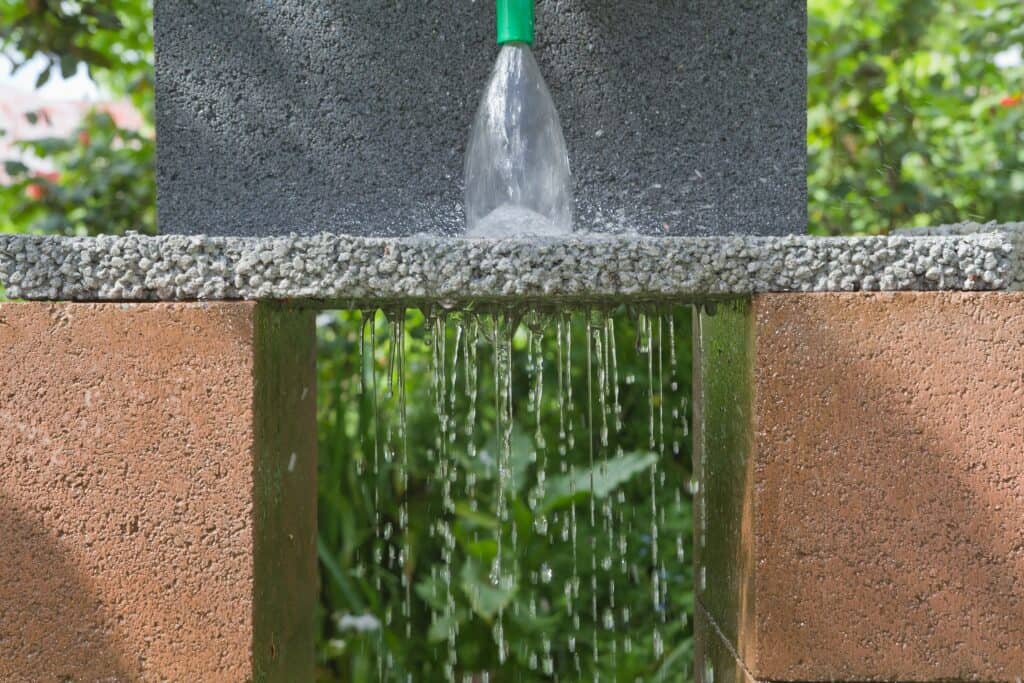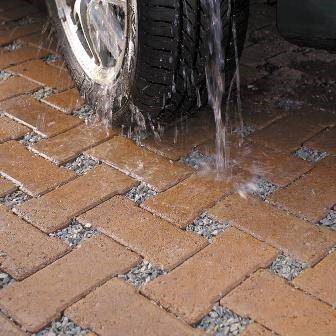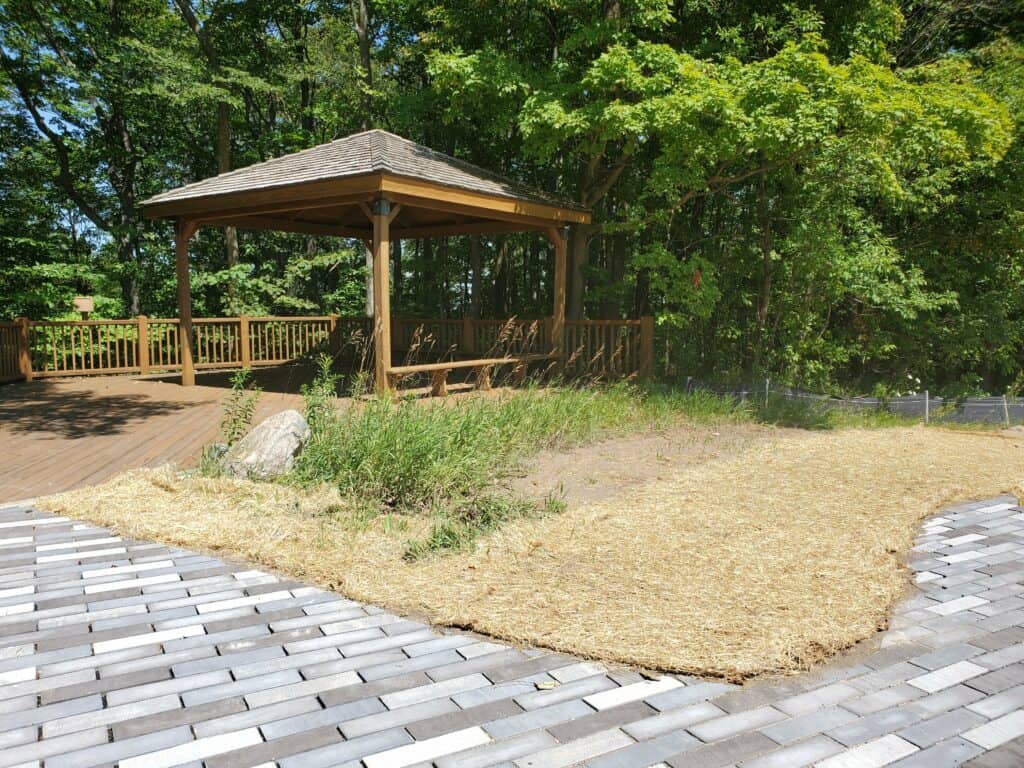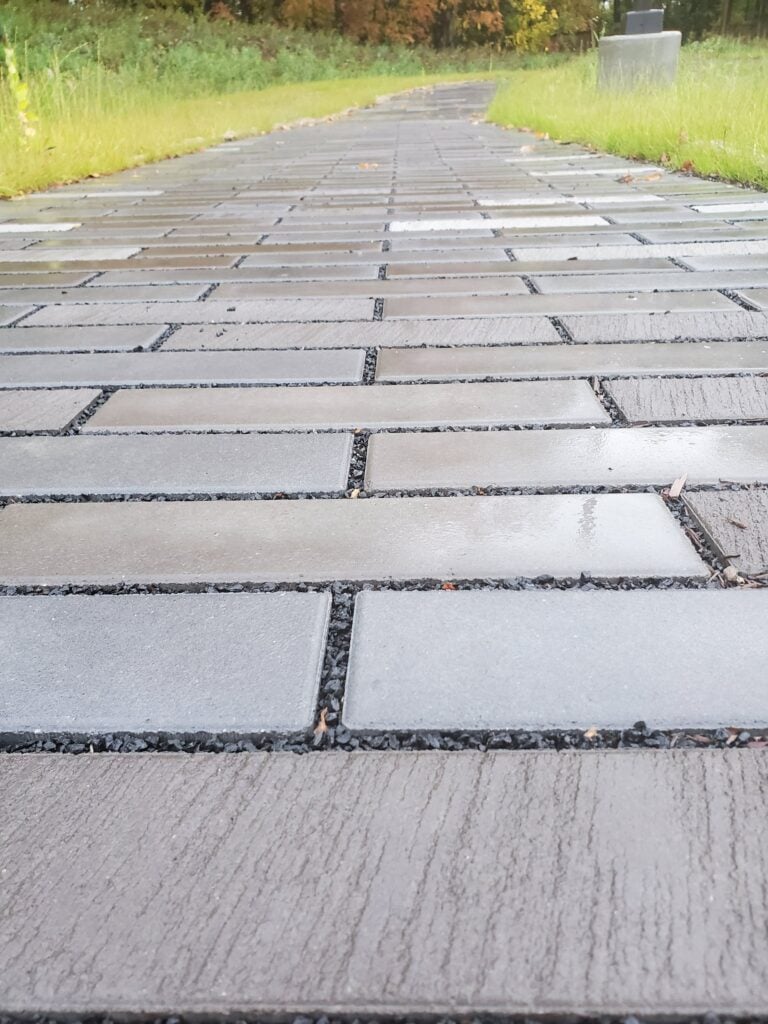Porous or permeable pavement surfaces are suited for parking lots, low traffic residential streets, driveways, and sidewalks. The porous or permeable surfaces allow stormwater to infiltrate into underlying soils, thereby promoting pollutant treatment and groundwater recharge.
Permeable paving options include porous asphalt and concrete, block pavers, and vegetated grid systems.
Permeable pavers and porous asphalt and concrete are generally used in higher-traffic parking and roadway applications, while vegetated grid systems are more commonly used in auxiliary parking areas and roadways.
Permeable pavers are comprised of interlocking concrete bricks, separated by joints, or gaps, filled with small stones or sand, which are laid over a bed of aggregate stones. Water is able to infiltrate through the joints in the pavers and is stored in void space in the stone bed underneath the paver surface, where it is then filtered back into the soil.
Porous asphalt is the same as regular asphalt, except it is manufactured with the fine materials omitted, leaving open spaces that allow water to filter through to a “recharge” or drainage bed.
Porous concrete is composed of materials that result in voids when it is dry, allowing water to drain through a bed of stone.
Vegetated grid systems are plastic or concrete grids over a bed of drainage material and soil. The voids are then seeded with low-maintenance grass varieties.
Depending on design, paving material, soil type and rainfall, permeable pavements can infiltrate as much as 70% to 80% of annual rainfall. In addition, when properly selected, designed, constructed, and maintained, porous pavements function as intended in cold-weather climates. Porous pavement projects should be designed and constructed by an experienced professional. It is critical that all types of porous pavement projects are maintained according to manufacturer specifications. Maintenance oftentimes includes sweeping or vacuuming sediments from permeable pavers, asphalt, and concrete, replacement of drainage gravel in the voids of permeable paver systems, and tending to grass in vegetated grid systems.
While initial costs for porous pavements are typically higher than costs for conventional pavements, they are offset by eliminating the need for other stormwater infrastructure.
Additional Resources
SEMCOG’s Low Impact Development Manual for Michigan: A Design Guide for Implementers and Reviewers
p. 241 – 255





